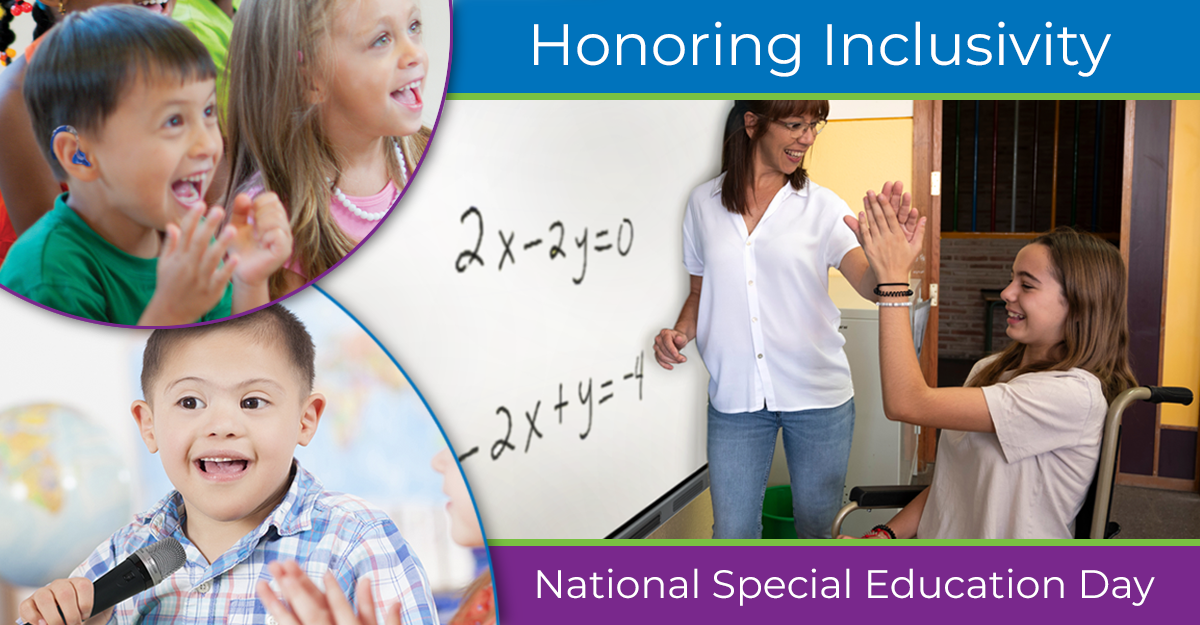
December 2nd is National Special Education Day and it holds a special place in the hearts of educators and advocates alike. On this day in 1975, the Individuals with Disabilities Education Act (IDEA) was signed into law, reaffirming the importance of inclusive education for students with special needs. As we commemorate this occasion, it's an opportune time to delve into its history, grasp its significance, and explore how technology, such as interactive displays and learning apps, plays a pivotal role in promoting inclusivity in today's classrooms.
History of IDEA
National Special Education Day originated from passionate advocacy that paved the way for IDEA. Before its enactment, students with disabilities faced significant barriers to accessing quality education. There were limited resources for specialized instruction and a lack of accommodations in mainstream classrooms. IDEA was a watershed moment, establishing the right of these students to a free and appropriate public education (FAPE) tailored to their unique needs. By championing individualized education plans (IEPs) and encouraging the inclusion of students with disabilities in mainstream classrooms, IDEA sought to provide equal educational opportunities for all.
The Importance of National Special Education Day
Reflecting on National Special Education Day is a powerful reminder of our enduring commitment to nurturing an inclusive educational setting. It underscores the need for collaboration among educators, parents, and policymakers to ensure that every student has access to a quality education. Embracing diversity in our schools not only fosters academic success but also nurtures personal growth.
Relevance for Today's Classrooms
As the educational landscape undergoes constant change, the significance of National Special Education Day becomes increasingly evident. As classrooms become more diverse, educators are challenged to provide individualized support to meet the unique needs of their students. This might involve tailored lesson plans for students with different learning styles, additional resources for those requiring extra assistance, or fostering a supportive environment for students from varied cultural backgrounds. The principles embedded in IDEA are not only timeless but also adaptable to the dynamic nature of contemporary education.
Technology's Role in Inclusive Education
Integrating technology stands out as a catalyst for fostering inclusive education. Interactive displays, learning apps, and other technological tools have emerged as powerful resources to bridge gaps and enhance the learning experience for students with special needs. These tools are designed to accommodate various learning styles and provide personalized learning pathways, aligning seamlessly with the principles of special education.
Interactive displays have transformed traditional teaching methods, offering dynamic ways to engage students. For students with special needs, these displays provide a multisensory approach, catering to diverse learning preferences. Teachers can utilize interactive displays to create visually stimulating lessons, making abstract concepts more tangible and accessible. This inclusivity not only benefits students with disabilities but enhances the overall learning experience for the entire class.
To read how interactive technology has boosted active learning in one school, click here: Clelian Heights School for Exceptional Children
The rise of learning apps has created opportunities for personalized and adaptive learning. Learning apps can be customized to suit individual learning profiles, allowing students to progress at their own pace. For students with special needs, learning apps offer tailored content, interactive exercises, and real-time feedback, creating a supportive learning environment. The incorporation of gamification elements in these apps makes learning more engaging and enjoyable for students of all abilities.
Technology has significantly contributed to breaking down barriers that once limited access to education for students with special needs. Digital textbooks, audiobooks, and speech-to-text applications empower students with learning disabilities, ensuring they have equal access to educational materials. Additionally, virtual classrooms and online collaboration tools facilitate communication and interaction, promoting a sense of community among students, regardless of their physical location or abilities.
As we commemorate National Special Education Day, let's reflect on the strides made in creating a more inclusive learning environment. Embracing the principles of IDEA and harnessing the power of technology in the classroom are essential steps toward fostering an environment where every student can thrive. Let us renew our commitment to providing equitable educational opportunities for all, celebrating the unique strengths and contributions of every learner in our diverse classrooms.
Looking for easy-to-use solutions that can optimize teaching and learning in any classroom setting? Go to www.boxlight.com.


